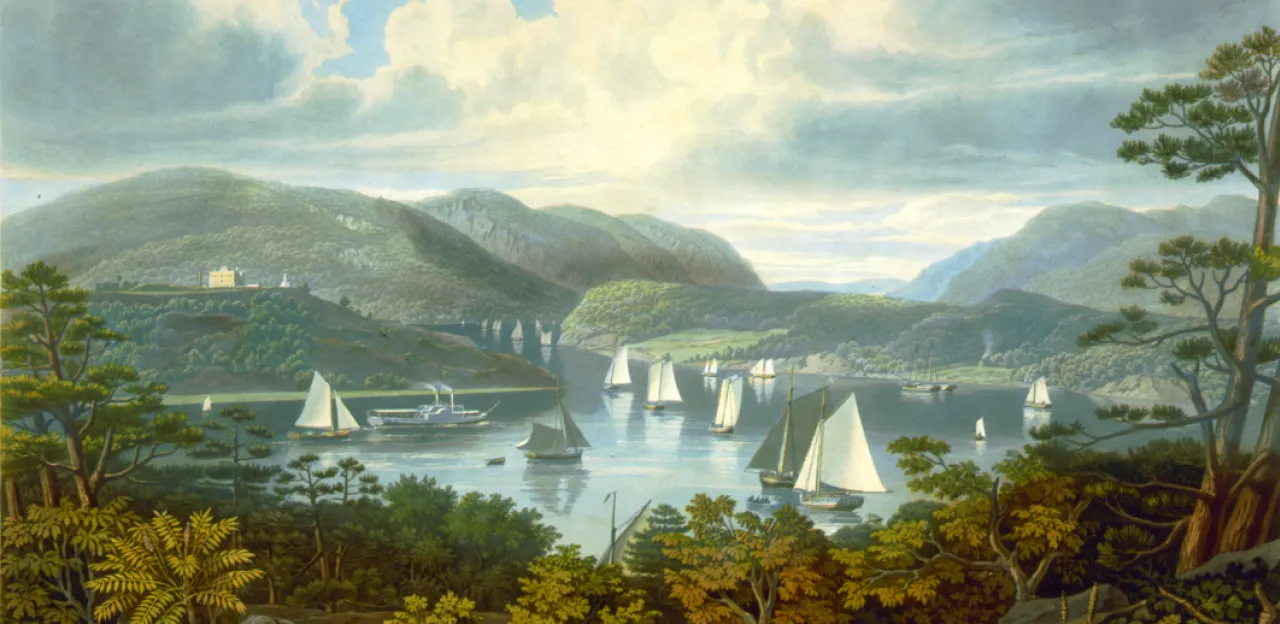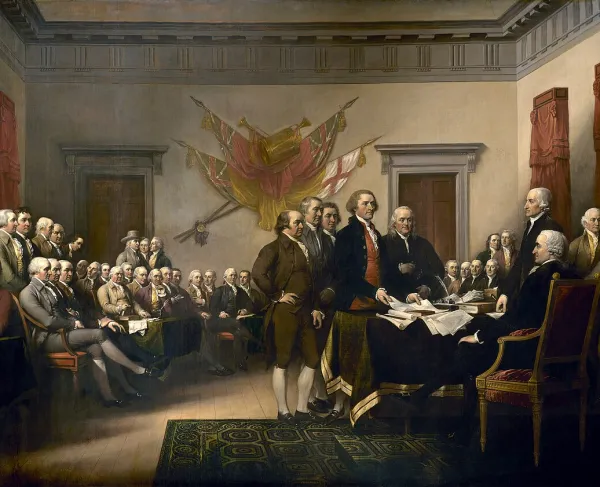West Point: The Gibraltar of the Hudson

Moving an army in Revolutionary America was a daunting task; roads, where they existed, were little more than cart tracks and the terrain was rugged. Both armies used water as a means of transportation. British dominance at sea shifted the struggle for transportation to the rivers and waterways that crisscrossed the colonies. Rivers such as the Savannah, Dan, York, Delaware, Mohawk, and Hudson were strategically critical. The Hudson, however, would prove to be one of the most important rivers of the war.
Locate the Hudson on a map and it becomes clear why it was so important. The highway formed by Lake Champlain, Lake George, and the Hudson connected Montreal in British Canada to New York City. Troops moving along this route would have to travel overland in two key places. Two forts, dating back to the French and Indian War guarded these points. Fort Ticonderoga guarded the portage between Lakes Chaplain and George, and Fort Edward commanded the headwaters of the Hudson. An additional fort, Stanwix, guarded western approach along the Mohawk River. Combined these fortifications guarded Albany, one of the oldest cities in the Colonies, from attacks from the north and west.
In June of 1777, a British column, led by General John Burgoyne, marched south from Quebec intent on capturing Albany and securing the Hudson. British control of the Hudson would sever the New England colonies, considered the most rebellious of the thirteen, from their counterparts; a strategy the British felt would end the war. Key to this strategy was another column, led by General William Howe, moving up the Hudson from New York.
The vulnerability of the lower Hudson had long worried General George Washington. In March of 1776, Washington ordered three forts, Montgomery, Clinton, and Constitution, constructed about five miles below West Point. By the middle of 1777, Montgomery and Clinton were complete and a large iron chain was strung across the river.
On October 6, 1777, a force of about 2,000 British soldiers under Sir Henry Clinton attacked the 600-man garrison at forts Clinton and Montgomery. After a sharp fight the defenders were overwhelmed, 41 British soldiers lay dead with another 142 wounded, 75 Americans were killed or wounded and another 263 captured. Both forts were destroyed as the British withdrew. Sir Henry Clinton’s attack on forts Clinton and Montgomery was designed as a diversionary attack, meant to pull troops from General Gates’ army opposing Burgoyne at Saratoga. However, this small force was not the army promised by Howe. Instead, Howe headed for Philadelphia; leaving Burgoyne to meet his fate at Saratoga.

After the resounding American victory at Saratoga, the Hudson valley returned to American control and the British turned their attention towards the Southern colonies. The defense of the Hudson still worried Washington, and a new fortification was planned above the previous forts; at the narrow “S” curve of the river: West Point. The bend in the river was notoriously difficult to navigate, forcing ships to tack, and featured strong currents and often-unfavorable winds. Washington put his best engineer on the task, a young Polish Colonel named Tadeusz Kościuszko.
Fortress West Point was a series of fortifications arraigned on the west bank of the Hudson and Constitution Island. Spanning the river between the two locations was The Great Chain, each link measured two feet in length and weighed 114 pounds, the total length spanned 600 yards of river and weighed 65 tons. Helping to keep the chain afloat was a log boom that, combined with the narrow and winding river the chain blocked any vessels from passing the forts.
On the heights of the west bank stood Fort Arnold, the largest at Fortress West Point. The fort provided the firepower that could sink any vessel that tried to pass the chain. Fort Arnold had stone walls with earthen parapets, it held a garrison of 700 troops, and mounted one 24-pounder, six 18-pounders, one 12-pounder, one 4-pounder, three 3-pounders, and eleven mortars. Within the fort were two barracks, a powder magazine, and bombproofs. Protecting the landward side of Fort Arnold was Fort Putnam, a stone fortification that included three interior casemates, two bomb proofs, and a provision magazine. The garrison could include up to 420 men, housed in tents outside the fort, and the armament included five 18-pounders, two 12-pounders, two 6-pounders, one 4-pounder, and four 5.5-inch mortars. The combined fortifications of Arnold and Putnam were designed to withstand a ten-day siege.
Across the river on Constitution Island was Fort Constitution, originally begun in 1776 it was only partially completed, with efforts and materiel being diverted to Forts Montgomery and Clinton. When Montgomery and Clinton fell in October 1777 Fort Constitution was also captured and destroyed by the British. In 1778, the fort was partially rebuilt to protect the eastern end of The Great Chain. Supporting these major fortifications were a series of additional batteries and redoubts; all designed to provide covering fire for the forts or the river.
Kościuszko finished constricting Fortress West Point in 1780, its commander, Benedict Arnold, took command on August 3, 1780. While Fortress West Point never fired a shot in anger, it was witness to the greatest treachery in American history. Arnold had been unhappy with the patriot cause after his leadership at Saratoga was overlooked, and began questioning his role in it.
Prior to his command of West Point, Arnold had already been providing information to the British. Once in place at West Point, he actively tried to weaken the fortress, and hoped to surrender it to the British. Fortunately, Arnold’s treason was discovered when Maj. John André was captured, causing Arnold to flee to a British warship.
On July 4, 1802, Fortress West Point ended its defense of the Hudson, and officially became the United States Military Academy. Since 1802, The Long Grey Line has steadily marched from its rocky heights, ensuring that not just the Hudson, but also the nation and the world are strongly defended. Now over the silent ramparts of earth and stone echoes the creed: Duty, Honor, Country.





